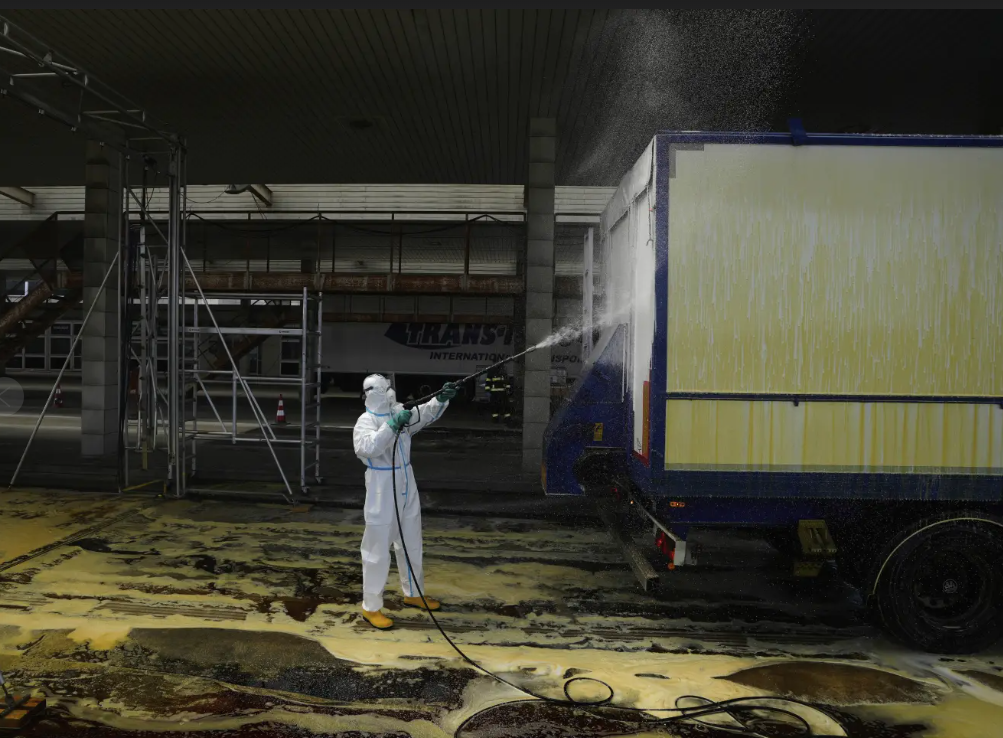Authorities across Central Europe are working to control an outbreak of foot-and-mouth disease among cattle, leading to widespread border closures and the culling of thousands of animals. The outbreak was first identified on a cattle farm in northwestern Hungary in early March. Two weeks later, three farms in neighboring Slovakia reported cases of the highly contagious virus. Since then, additional outbreaks have been confirmed in both Hungary and Slovakia, marking the first cases in more than 50 years in these countries.
Sándor Szoboszlai, a local entrepreneur from Levél in Hungary, described the situation as chaotic, with farmers concerned about the future of their herds and transportation disrupted by border closures. Nearly 3,000 cattle had to be culled after the disease was found on a farm in Levél. Szoboszlai expressed disbelief at the outbreak, stating that no one expected such a situation to occur, especially given the large farms in the region. He suggested that the virus might have been carried by the wind.
Foot-and-mouth disease primarily affects cloven-hoofed animals like cattle, sheep, goats, and pigs, causing fever and blisters in the mouth and hooves. It spreads through direct animal contact or via surfaces like clothing, vehicles, and even the wind. The disease poses no danger to humans, but it can devastate livestock populations.
Hungarian authorities are continuing efforts to contain the disease, disinfect affected farms, and stop the virus from spreading. Disinfectant mats were placed at town and village entrances to cleanse tires and vehicles that may carry the virus, though many mats quickly dried out or were displaced by traffic. Slovakia, concerned about Hungary’s containment efforts, closed 16 lesser-used border crossings with Hungary and one with Austria. Austria, which has not reported any cases, also closed 23 border crossings with Hungary and Slovakia. In the Czech Republic, disinfectant measures were implemented at all five border crossings used by freight trucks.
Professor Jiri Cerny from the Czech University of Life Sciences pointed out that contaminated objects, such as tires, shoes, and food, pose the greatest risk of transmission. The Czech government has stated that restrictions could be lifted 30 days after the last infected animal in Slovakia is culled.
While no new cases have been reported in Hungary this week, authorities are expected to complete the cleanup of the last infected farms soon. Hungary’s agriculture minister, István Nagy, expressed confidence that the outbreak was nearing containment.
A Hungarian official recently suggested that the outbreak could have been caused by an “artificially produced virus” or even a “biological attack,” though no evidence has been provided to support these claims. The Hungarian government has announced support for affected farmers, including a moratorium on loan payments and compensation for lost animals, as well as assistance with farm measures to prevent future outbreaks.
Szoboszlai, who witnessed the devastation firsthand, expressed deep sympathy for local farmers who had to cull their herds, particularly one farmer who lost his entire livelihood. The situation has been described as heartbreaking, with many farmers facing significant challenges as they rebuild.













